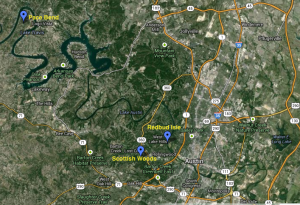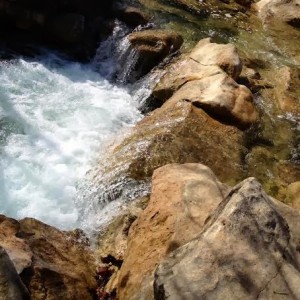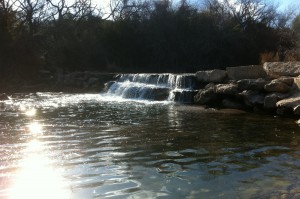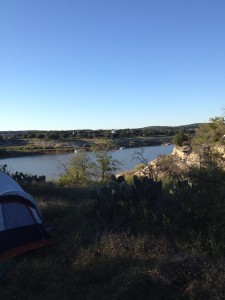 Exploring the natural spaces in and around Austin has been one of my favorite hobbies since moving here several years ago. The city’s greenbelts and natural pockets provide convenient opportunities to enjoy the beautiful Central Texas environment, and the surrounding area offers numerous State Parks within a couple hours drive. Here in Austin, Redbud Isle and the greenbelt near Scottish Woods have become two of my favorite places to spend time hiking with my dog, fishing, and relaxing. I visited both of these spots several times in January, and took advantage of some decent weather one weekend to camp at Pace Bend near Lake Travis.
Exploring the natural spaces in and around Austin has been one of my favorite hobbies since moving here several years ago. The city’s greenbelts and natural pockets provide convenient opportunities to enjoy the beautiful Central Texas environment, and the surrounding area offers numerous State Parks within a couple hours drive. Here in Austin, Redbud Isle and the greenbelt near Scottish Woods have become two of my favorite places to spend time hiking with my dog, fishing, and relaxing. I visited both of these spots several times in January, and took advantage of some decent weather one weekend to camp at Pace Bend near Lake Travis.
One early Saturday morning in the SW greenbelt, I approached the bottom of a trail leading down to small waterfall on Barton Creek and was happy to hear the sound of water flowing through the creek rather loudly. I walked across the rocks jutting out of the shallow water above the waterfall until I reached a large one in the middle of the creek. Having stood in that same spot when the creek was completely dry, I enjoyed listening to the modest rush of the water as it ran over the edge and fell several feet into the pool below the falls. I’ve seen the water level fluctuate drastically through the droughts and seasons, but I’d never before realized how complete the environment seemed with the presence of the water. The environment felt vital with that water running through the creek, as if it was made whole.
The next weekend, I went back to the SW greenbelt to fish and was standing on the same rocks above the waterfall. I couldn’t stop picturing the creek the way I had seen it last summer: completely dry, just smooth white rocks the entire eight mile stretch to Zilker Park. To see it with little baitfish, tadpoles, and insects darting around, it hardly felt like the same place. It’s amazing that the creek can dry completely out for significant portions of the year, then build up an entire ecosystem and nourish the surrounding environment. I found it pretty impressive how much life the creek supported after being dry just a few months back. If I let my thoughts get real profound with this whole idea, it seems to demonstrate the resiliency and effectiveness of the natural world.
One of the more memorable pieces from Leopold’s Sand Country Almanac was his discussion of hobbies. I grew up camping, fishing and experiencing the natural environment with my father, and it’s something I’ve always enjoyed. While camping at Pace Bend on the weekend of Jan.18-19, I was looking out at the lake thinking about how odd camping would sound if you just explained it objectively: some friends and I noticed the weather would be nice over the weekend so we decided to drive an hour to sleep outside. Doesn’t really make much logical sense. So I had already been thinking about this draw toward spending time in the natural environment, and then I came to Leopold’s discussion of hobbies near the end of the book. He offers a perfect answer.
“To wish to do it is reason enough. To find reasons why it is useful or beneficial converts it at once from an avocation into an industry–lowers it at once to the ignominious category of an exercise… ” (pg. 182-183)




